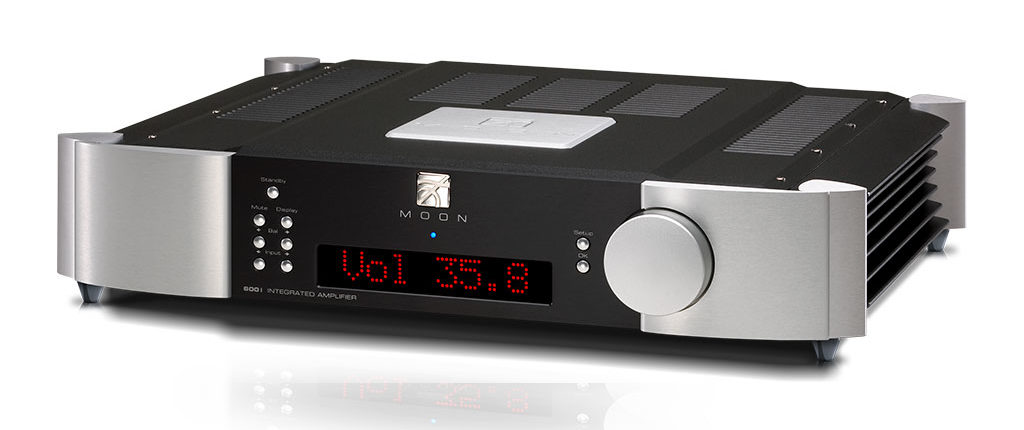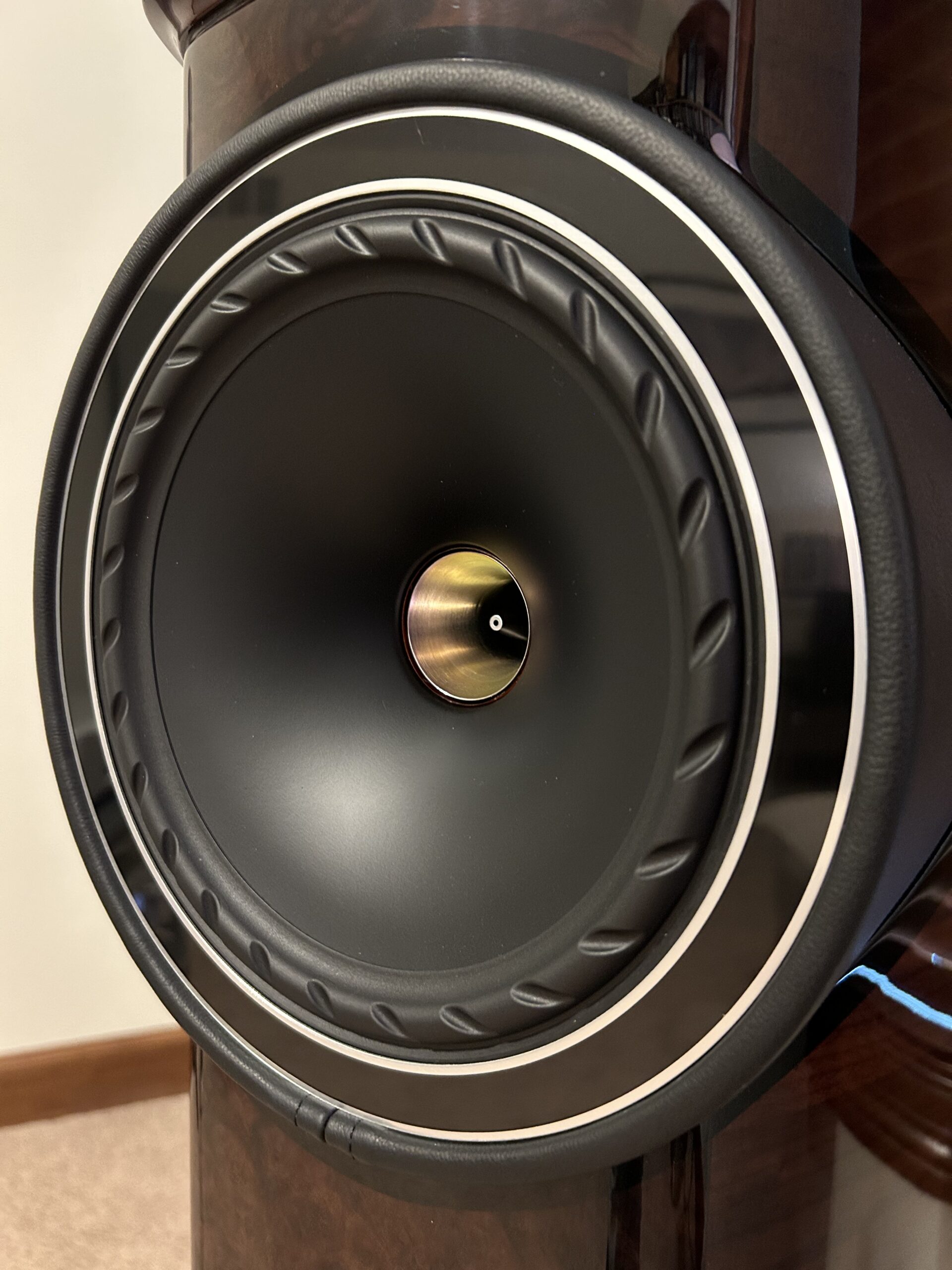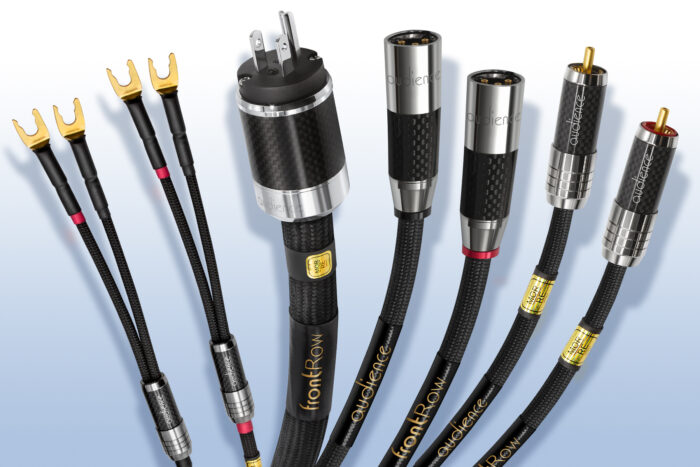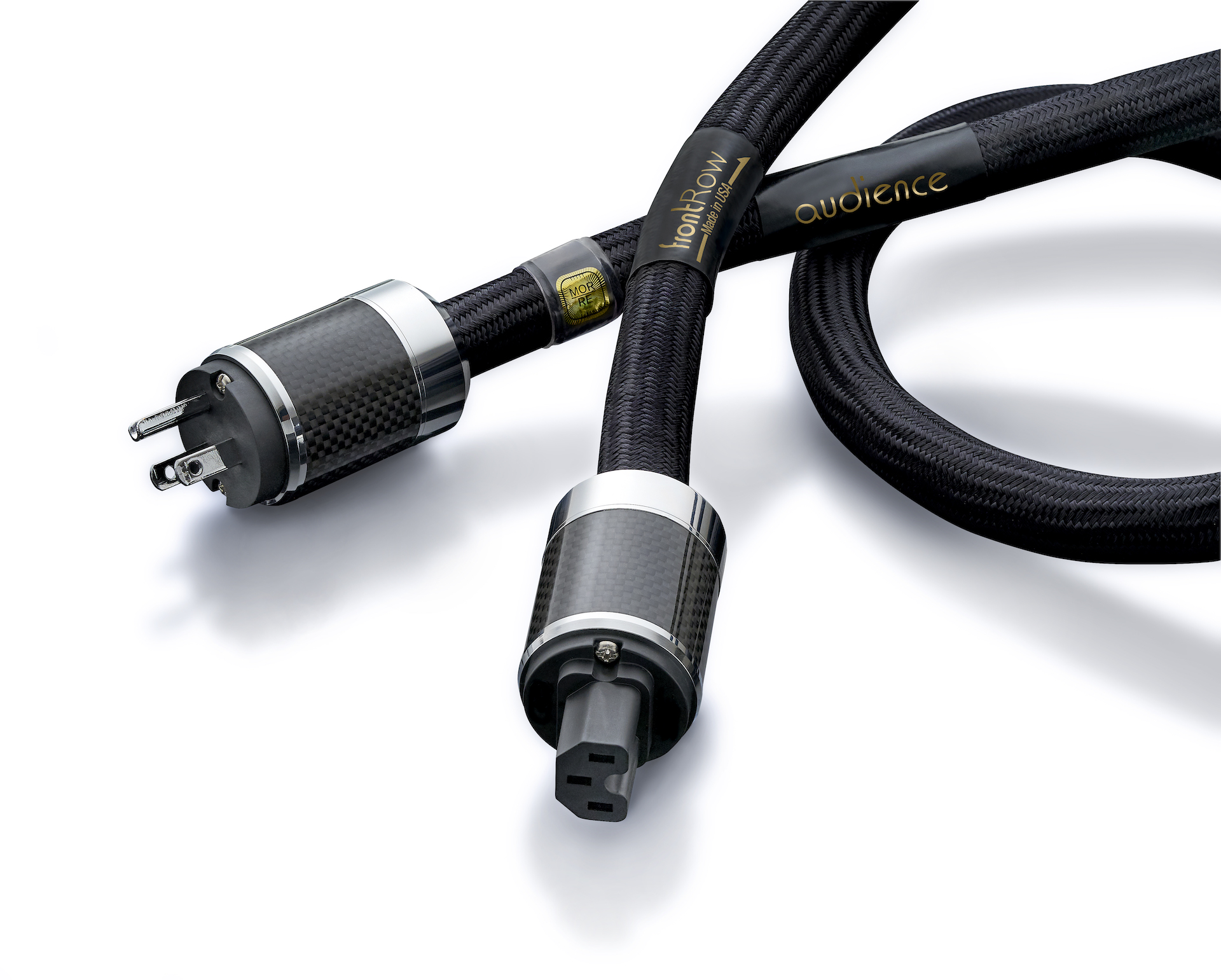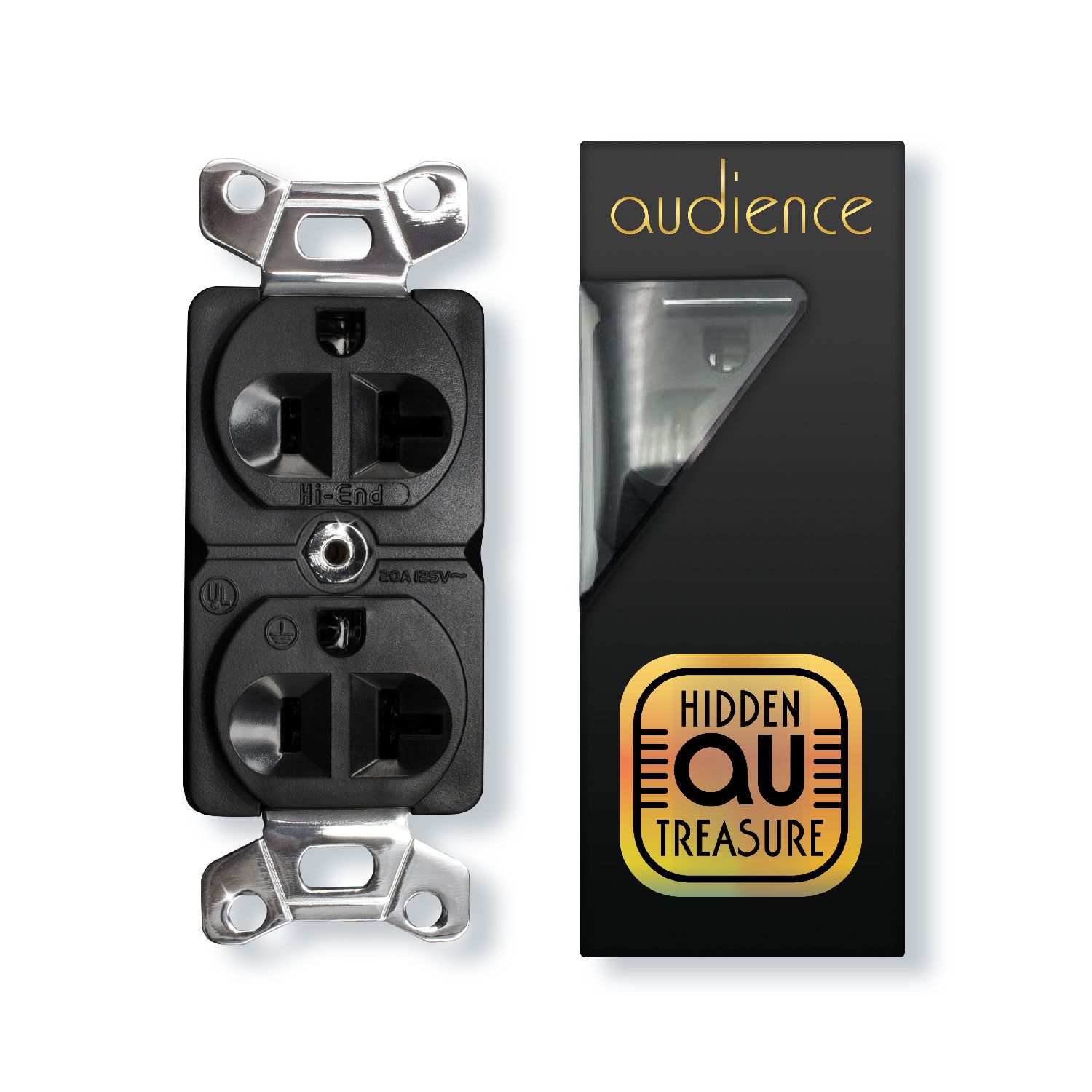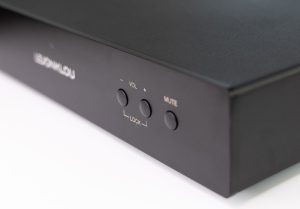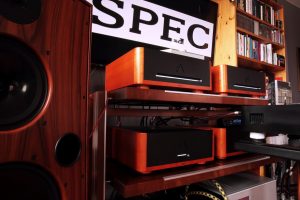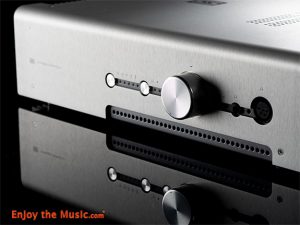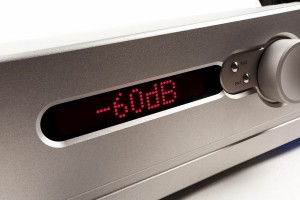As I've grown older, and presumably, wiser, I've come to appreciate more the significance of anniversaries. Whether they be personal, such as birthdays and wedding anniversaries, or professional (it occurs to me that I've been on the masthead at Positive Feedback for nearly 20 years), these milestone accomplishments resonate with me, due perhaps to their reinforcement of continuity and longevity in a world of seeming constant flux and uncertainty. Mayhap this explains the vicarious pleasure I experienced, learning earlier this year of Simaudio's 40-year anniversary. The Canadian-based high-end audio manufacturer began its life as Sima Electronics, founded in 1980 by Victor Sima. Sima's goal was to craft high-performance audio components with an emphasis on sound quality as opposed to feature-laden frills. Over the next several years, Sima Electronics changed its name to Simaudio and introduced, successively, the Celeste and MOON lines. Simaudio later broadened its product offerings, bringing to market the Evolution series of no-holds-barred high-end two-channel components, as well as lifestyle-focused all-in-one products, and even dedicated network streamers and headphone amplifiers.
My personal relationship with Simaudio extends back over two decades, beginning with the MOON I-5 integrated amplifier. Over the course of the ensuing years, I've owned numerous Simaudio components, with the MOON CD 5.3 CD player taking honors for longest-residing in my system, at 10 years. Recognizing that the last Simaudio component I reviewed for Positive Feedback was the Supernova CD player, back in 2006 (HERE), I thought it time that I reacquainted myself with the brand. Given my penchant for high-quality integrated amplifiers, I felt the 600i v2 would be a great reintroduction to the MOON line.
The MOON 600i v2, introduced in 2018, is second from the top of Simaudio's integrated-amplifier lineup, and supplants the original 600i, which had previously been in production from 2010. In this day and age of Swiss-army-knife amplification, whereby integrateds frequently come bundled with digital-to-analog converters, streaming / network capabilities, phono stages, and headphone outputs, the 600i v2 represents something of an anomaly, being an analog-only component, with its focus strictly on line-level amplification duties.
Possessing fully-balanced, complementary circuitry from input to output, the 600i v2 integrated amplifier employs numerous Simaudio proprietary technologies. The 600i v2 utilizes a Simaudio-developed "Lynx" circuit to eliminate the global-feedback loop. By eschewing overall feedback in its amplifier stage, the MOON virtually eliminates transient-intermodulation distortion (which Simaudio's engineers believe to be more detrimental to an amplifier's sonic signature than the more-commonly-measured harmonic distortion). The Lynx circuit reduces interaction interference from the speaker to the amplifier, resulting in real-time amplification, a more accurate tonal rendition, and elimination of phase errors associated with the application of global feedback. The 600i v2 also makes use of the Simaudio M-eVol2 volume control, which employs a R-2R resistor-ladder multiplying-digital-to-analog converter (MDAC) operating in the analog domain. The M-eVol2 is said to introduce no sonic degradation at any setting, while providing for very precise volume manipulation (down to 0.1 dB) across 530 steps. The 600i v2 is completely dual-mono in nature, from the preamplifier stage through to the power-amplifier stage, even down to the power supply, with its twin 400VA toroidal power transformers and 80,000 microfarads of storage capacitance.
From a design perspective, the 600i v2 differs from the original 600i in assimilating Simaudio's discoveries made in developing the flagship 888 mono-block power amplifier. Simaudio endowed the 600i v2's power supply with upgraded reservoir capacitors and made key changes in the preamplifier stage, including the employment of new high-speed semiconductors.
The MOON 600i v2 integrated amplifier may not include digital or phono accoutrements, but it is nevertheless feature-laden. The 600i v2 allows its owner to label inputs, offset gain up to 10 dB for any input, disable unused inputs, and establish a maximum volume-level threshold for any input. The 600i v2 also allows users to configure any input for home-theater pass-through applications, whereby the volume control and associated gain stage are completely bypassed.
Externally, the construction, build quality, and appearance of the 600i v2 befit its membership in Simaudio's upper range of product offerings. Measuring 18.75" wide by 4" high by 18.1" deep, and weighing 40lbs, the 600i v2's external appearance is both elegant and bold. The front panel includes a large red dot-matrix display, which can be dimmed or turned off, as well as a chunky rotary knob that does double-duty as volume control and mechanism for the user to scroll through various software-configuration functions. The front panel also includes push-button controls for selecting inputs, adjusting balance, muting the output, adjusting the display illumination, and placing the amplifier in standby mode. Two additional buttons allow the user to access the setup menu and confirm settings. The supplied remote control duplicates these functions and includes several more that support Simaudio's digital products; the remote includes back-lighting and vibration features for ease-of-use in darkened environments (these battery-depleting functions can be disabled). Around the back, the 600i v2 includes high-quality connectors for line-level sources (one balanced XLR and four single-ended RCA), unbalanced RCA preamp outputs, and two WBT five-way speaker-binding posts. The customary IEC AC inlet is also present, along with several connectivity options for linking the 600i v2 to other Simaudio components for centralizing control through the amplifier.
The MOON 600i v2 integrated amplifier is a class-AB design that delivers 125 watts per channel into an 8-ohm load, doubling output to 250 watts per channel into a 4-ohm load. The first five watts of the 600i v2's output are said to be in class-A. Simaudio recommends that the 600i v2 break in for a minimum of 400 hours to achieve optimum performance, and that the amplifier be powered up continuously (placing the 600i v2 into standby mode disconnects the input stage and disables the display, leaving all preamplifier and amplifier stages under power and warmed up).
During the course of the review period, my system comprised the Marantz SA-10 SACD player, Focal Sopra 1 and Audio Physic Tempo plus loudspeakers, Kimber Kable Select KS-1036 and Nordost Heimdall 2 interconnects, Kimber Monocle X and Nordost Heimdall 2 speaker cables, Audience aR2p-T4 power conditioner, Au24 SE-i power cords and Hidden Treasure AC outlet. All components were placed on a SolidSteel 6.2 Audio Table, with Symposium Acoustics Rollerblock Jr HDSE footers. Acoustic treatments were by GIK Acoustics.
MOON components are renowned for their lengthy break-in times, and my previous experiences with Simaudio gear preconditioned me to expect a trying period while the 600i v2 came on song, but in this I was pleasantly surprised. The 600i v2 sounded good right out of the box, if a bit bland and uninvolving. Within the first 100 hours, the amplifier opened up remarkably, gaining cohesion and transparency. As the hours continued to pile up over the ensuing weeks of continuous play, the 600i v2 improved incrementally, but absent were the radical performance swings I'd witnessed with previous Simaudio components.
Once fully broken in, the Simaudio MOON 600i v2 integrated amplifier played music with beguiling levels of clarity and incisiveness. I was struck first and foremost by the unfettered nature of the 600i v2's spatial presentation. Never before have I experienced sonic imaging so utterly divorced from the loudspeakers as with the MOON amplifier in situ. Listening to "Train in the Distance" from Paul Simon's Hearts and Bones release (Warner 23942-2), I noted that the soundscape expanded in all directions, with the music swelling to fill the room. On the "Rene and Georgette Magritte With Their Dog After the War" cut from the same CD, the background vocals were convincingly in the room, positioned as they were behind Simon, whose upfront vocal was more dimensional and tangible than I'd ever witnessed. For this listener, who places a high degree of importance on imaging and soundstaging, the 600i v2's performance was revelatory.
Deborah Holland is known principally as songwriter and vocalist for the late-80s pop supergroup Animal Logic, which, aside from Holland, comprised bassist Stanley Clarke and drummer Stewart Copeland. Holland has also released several solo albums, which, in addition to being musically exceptional, are also generally pristinely recorded. Holland's vocal on "Bad Girl Once (Soccer Mom Now)" from her Bad Girl Once CD (RageOn Records ROR0001) showcased the expressive and liquid nature of the 600i v2's midrange. Holland's voice was rendered with a sense of unforced clarity that, combined with a sublime truth-of-timbre, imbued the performance with a profound sense of verisimilitude. Similarly, Jay Beckenstein's saxophone on the title track of Spro Gyra's Morning Dance release (MCA Records MCAD-37148) was reproduced with a sense of consummate naturalness, a perfect amalgam of bite and burnished warmth, that enabled me to more easily suspend my disbelief that Beckenstein wasn't actually playing in my room.
The Simaudio MOON 600i v2 was unparalleled in my experience at unraveling complex, multi-tracked mixes, lifting and segregating individual threads from the broader cacophony of instrumentation. "Ice Train" from Ashra's Correlations CD (Virgin CDV-2117), is a busy track, adding layer upon layer of guitar and synthesizer as the song builds to its climax. The 600i v2, more than any amplifier I've experienced, kept these disparate threads from becoming a jumbled morass. I was able to clearly pick out the individual lead lines from the myriad background sequencer, bass guitar, rhythm guitar, and percussion parts. A key contributor to the 600i v2's ability to navigate complex mixes was its uncanny sense of speed and rhythmic agility. The Simaudio integrated possessed a propulsive ease that drove music forward in a very engaging way. The 600i v2 played and let go of musical notes in a captivating manner, making for very enthralling listening experiences. The myriad of sonic effects at the beginning of "The Waiting Room" from Genesis' The Lamb Lies Down on Broadway (Atlantic 82677-2) erupted in my room with explosive realism, and Tony Banks' frenetic synthesizer solo in "Riding the Scree" from the same album was rendered with a crystalline purity as the 600i v2 reproduced each note with a vivacity that had me locked into the performance.
The Simaudio 600i v2 integrated amplifier excelled at reproducing treble instruments. Whether it was Bill Bruford's cymbal work on "One More Red Nightmare" from King Crimson's Red CD (Inner Knot KCSP 7) or the plangent violin on "Searching for Lambs" from Steeleye Span's Tempted and Tried release (Shanachie 64020), the 600i v2 reproduced the highest frequencies with air and seemingly limitless extension, with no accompanying grit or glare. At the other end of the frequency spectrum, the 600i v2 played back bass instrumentation with depth, tautness, and true dynamic aplomb. If the 600i v2 could be considered to have any chinks in is armor, however, it was in this aspect of its performance. When it came to bass reproduction, the Simaudio integrated played it straight—there was no euphony or warming up of the mid-bass or lower-midrange regions. Potential purchasers seeking a warm or overly-full presentation may be put off by the MOON's neutrality.
I was able to compare the Simaudio 600i v2 to two integrated amplifiers, the AVM A3.2, retailing for $4800, and the conrad-johnson CA-150, which retailed for $6,500 prior to going out of production. The AVM A3.2's class-D topology is very different from that of the class-AB MOON 600i v2. Additionally, the AVM provides tone and loudness-compensation controls, as well as the ability to add onboard digital-to-analog-converter, phono-stage, and/or FM-tuner modules. The AVM is rated to deliver 100 watts per channel into an 8-ohm load. The A3.2 has been my reference amplifier for the past two years, primarily on account of its uncanny transparency, resolution, and ability to get out of the way of the music. The 600i v2, however, bettered the A3.2 by virtue of being even more transparent, more resolving, and, at the same time, more communicative and involving. More extended at both frequency extremes, the 600i v2 also surpassed the A3.2 with its expressive midrange reproduction. The conrad-johnson CA150 proved to be an interesting counterpoint to the Simaudio 600i v2. The CA150 combines a passive linestage with a high-sensitivity class-AB power amplifier. Like the Simaudio, the conrad-johnson does not possess a phono stage or onboard digital capabilities. The CA150's power rating is a comparable 135 watts per channel into an 8-ohm load. Sonically, the CA150 possessed a liquid, golden midrange that contrasted with the 600i v2 more immediate and expressive presentation. The CA150's soundstage presented itself further behind the speakers, but lacked the 600i v2's inimitable ability to float images independent of each other and the loudspeakers. Dynamics were better rendered via the 600i v2, which was also more robust at the frequency extremes. Of significant note, however, is the 600i v2's overall veracity and sheer lack of artifice, which not only exceeded the performance envelope of the AVM and conrad-johnson integrateds, but also that of every amplifier I can recall experiencing in my system.
Over the course of nearly two decades in my tenure as reviewer for Positive Feedback, I've amassed considerable experience with integrated amplifiers, having owned, auditioned or reviewed numerous models during that time. Even within the context of that breadth of experience, Simaudio's MOON 600i v2 strikes me as a truly special performer. With its bold aesthetics and built-to-last-a-lifetime construction, the MOON 600i v2 exudes high-end class. It's the MOON 600i v2's sonics, however, that place it in the deserved ranks of upper-echelon integrated amplifiers. Transparent and resolving, dynamic and expressive, the Simaudio MOON 600i v2's immediacy and musical involvement is unparalleled in my experience. It's the best I've ever heard.
600i v2 Integrated Amplifier
Retail: $9200
Simaudio




